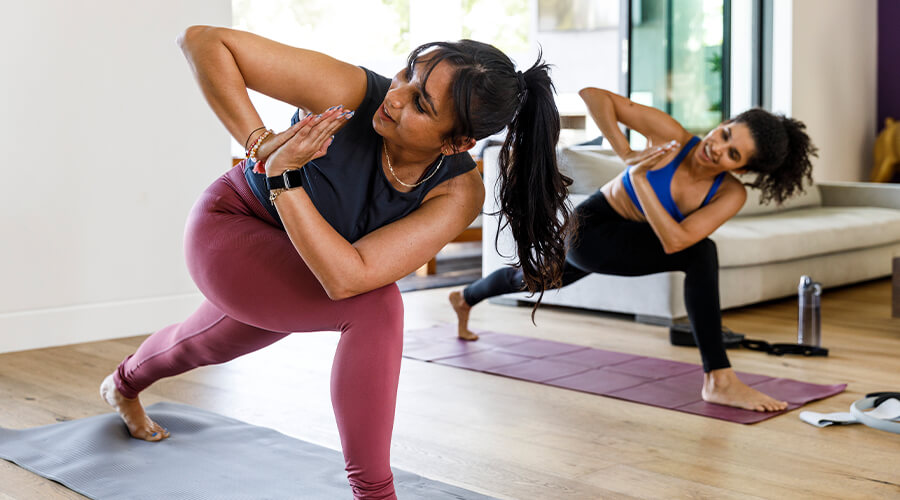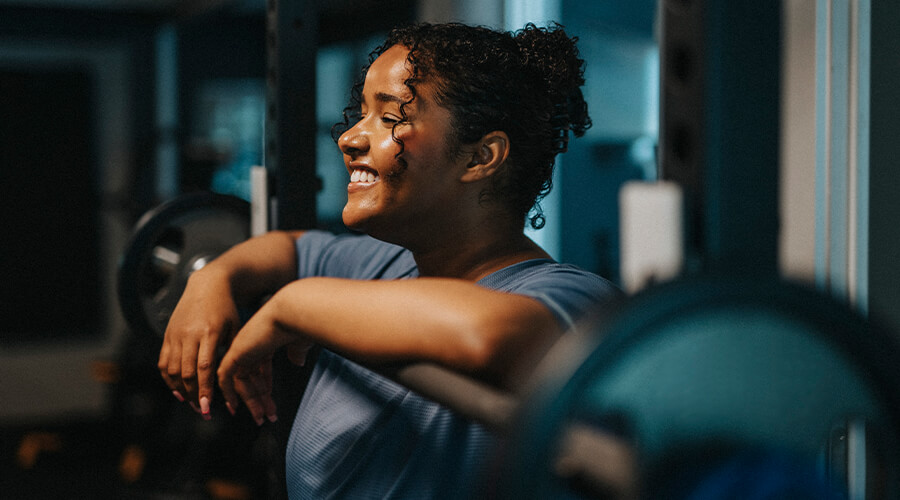Whether you’re hoping to shed a few pounds, tone up for summer or boost your cardiac health, starting a new workout routine can be intimidating. Setting achievable goals is key to developing any new exercise plan.
Amy Kleski, director of retail operations for the McConnell Heart Health Center and the Neuroscience Wellness Center at OhioHealth, offers tips on how to strike the perfect balance between challenging yourself and achieving realistic milestones.
“Ask yourself why you want to get fit and what that means to you,” says Amy. “Your goals should go beyond how you look or a number on a scale. If you focus on how exercise will improve your quality of life long-term, it’s much more motivating.”

Set smart goals
Starting slow might feel difficult when you’re excited to get moving. But if you’re embarking on a new fitness routine, it’s important not to do too much too fast. Amy suggests keeping track of how you feel after your workouts and letting that guide you on how hard and fast you should continue. Setting specific goals daily or weekly can help you stay on track with your fitness plan and help you build a solid foundation to work from.
“Most of us have long-term goals we are working on, and it can be discouraging when you don’t see the results you want quickly,” says Amy. “Focusing on the easy wins upfront can help you track your progress and gain the confidence you need for staying on track with your fitness plan.”

The right mindset
No matter your fitness level, some days it will be hard to get moving. Whatever the reason, Amy says that having a personal trainer or workout partner can help you stay accountable. Even texting a friend about your goals can help you find the encouragement you need to keep going.
“It’s important to have people around to push you, encourage you and recognize how far you’ve come,” explains Amy. “I’ve seen so many people break through those mental barriers. Once you start to see some success, you really can’t be stopped.”
If you find it motivating to meet small goals — like hitting your target heart rate or knowing how many calories you’ve burned — a wearable device might be for you. While some people enjoy seeing data that supports their fitness goals, it’s not something everyone needs to set and meet exercise objectives.

Know your limits
Amy says that at the end of the day, you should be able to sit back and feel good about what you’ve done. If you shift to feeling mentally exhausted and find you are not enjoying yourself, you might be pushing yourself too hard.
“If you’re starting from scratch and trying to sprint your way to results, you’re probably going to be physically and mentally exhausted,” says Amy. “That can make it hard to get back into your fitness routine and keep going.”
She also says you should consult a personal trainer or exercise physiologist any time you try a new type of exercise, such as weightlifting or strength training. An expert can guide you on how to use proper form and technique to prevent injuries.

Seek out variety
Exercise and fitness don’t have to be miserable or boring. Because your body adapts to exercise, you may see greater benefits by mixing up your routine. Personal trainers and fitness classes are great resources for new ideas. While some people enjoy planning their workouts, others prefer to have someone do the planning for them. Just remember that achieving your physical activity goals will be easier if you enjoy your workout.
“Sometimes people try out new fitness trends they see on social media because they know someone who’s had success with it, but you should let your interests guide you,” Amy advises. “Try new things to find what works for you. And remember even if you can only get in ten minutes a day, that’s a great place to start on your fitness journey.”





